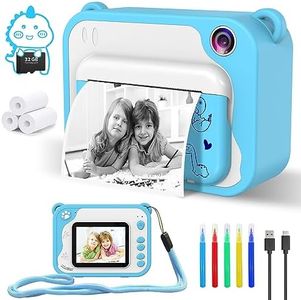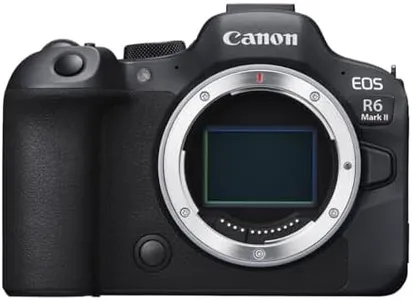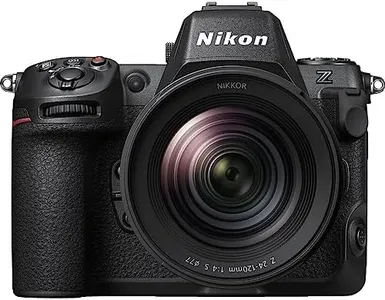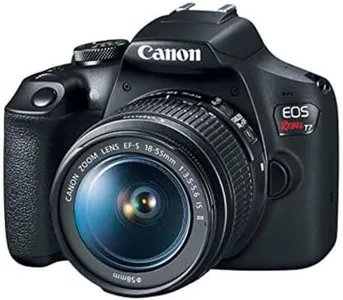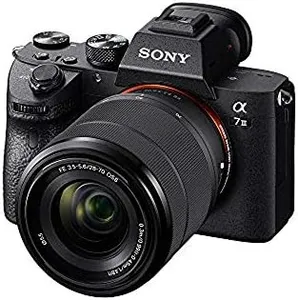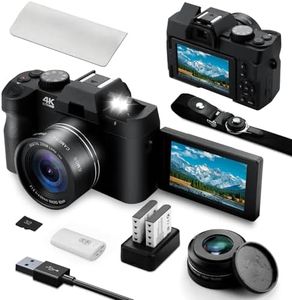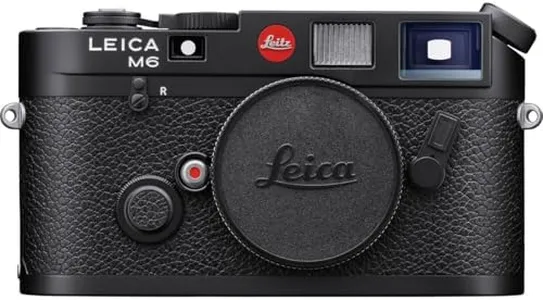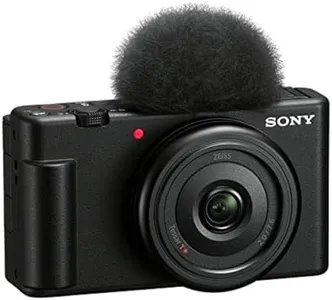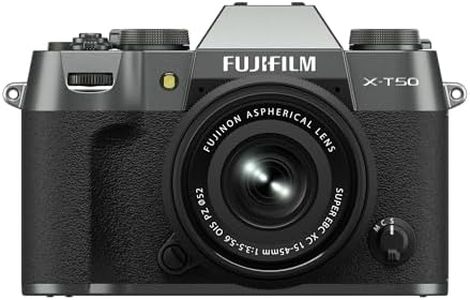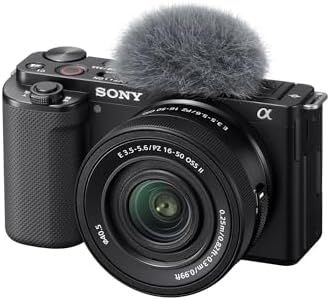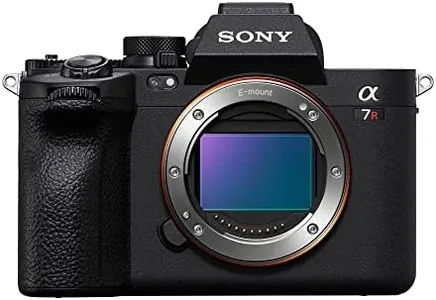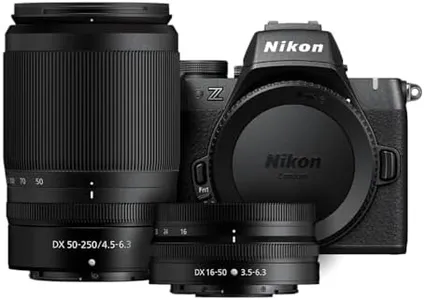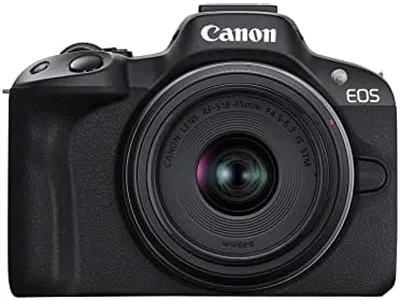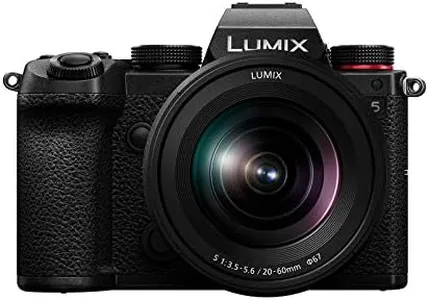10 Best Cameras For Photography 2025 in the United States
Our technology thoroughly searches through the online shopping world, reviewing hundreds of sites. We then process and analyze this information, updating in real-time to bring you the latest top-rated products. This way, you always get the best and most current options available.

Our Top Picks
Winner
Canon EOS R6 Mark II Mirrorless Camera (Body Only), Full-Frame Camera, 24.2 Megapixel CMOS Sensor, Photo and Video Capabilities, Black
Most important from
513 reviews
The Canon EOS R6 Mark II is a strong choice for photographers looking for a versatile full-frame mirrorless camera. With its 24.2-megapixel CMOS sensor, it captures sharp and detailed photos, even in low light, thanks to a wide ISO range that's good for indoor and outdoor shooting. The camera's autofocus system is impressive, using advanced subject tracking that can detect people, animals, and even vehicles, making it easier to get sharp images of moving subjects. This is especially handy for sports or wildlife photography. The high continuous shooting speed, up to 40 frames per second, helps freeze fast action clearly. Its compatibility with Canon RF lenses gives users access to a broad range of high-quality optics. The build feels sturdy and ergonomic, and the multi-angle touchscreen and bright electronic viewfinder make composing shots comfortable from different positions.
On the video side, the R6 Mark II supports 6K oversampled 4K video up to 60 fps and can record Full HD at high frame rates, which is great for slow-motion footage. It also offers long recording times without overheating, which many video shooters will appreciate. Wireless and wired connectivity options make transferring and sharing files convenient. One possible downside is that the 24.2-megapixel resolution, while excellent for most uses, is not the highest available, so it's less suited for photographers who need extremely large prints or heavy cropping. Also, as a body-only option, you’ll need to invest separately in lenses.
This camera is well-suited for enthusiasts and professionals who want reliable performance, excellent autofocus, and strong photo and video capabilities in a solid, easy-to-handle package.
Most important from
513 reviews
Sony Alpha 7 IV Full-frame Mirrorless Interchangeable Lens Camera with 28-70mm Zoom Lens Kit
Most important from
1067 reviews
The Sony Alpha 7 IV is a versatile full-frame mirrorless camera that excels in photography thanks to its impressive 33MP sensor and advanced image processing capabilities. The camera shines particularly with its excellent autofocus system, featuring 759 points that provide fast and accurate focusing, which is essential for capturing sharp images of moving subjects. Its wide ISO range of 50 to 204800 ensures great performance in various lighting conditions, making it suitable for both bright daylight and low-light scenarios.
One of the standout features is its video capabilities, offering up to 4K 60p recording with high-quality color profiles, making it appealing for videographers as well. The inclusion of a robust image stabilization system helps reduce camera shake, which is beneficial when shooting handheld. However, beginners might find the extensive range of settings and features a bit overwhelming, as it does cater to both amateurs and professionals. The lens kit included (28-70mm) is versatile for everyday photography but may not meet the needs of specialized photographers requiring specific focal lengths. Additionally, the camera body is on the heavier side, which could be less comfortable for long shooting sessions.
In terms of connectivity, the Alpha 7 IV supports Bluetooth and Wi-Fi, making it easy to share photos and control the camera remotely. Although the battery life is impressive, lasting around 110 hours, users should keep in mind that extensive use of video recording may drain it faster. The Sony Alpha 7 IV is a powerful camera perfect for anyone serious about photography or videography, offering high-quality images and advanced features, though its complexity and weight might pose challenges for less experienced users.
Most important from
1067 reviews
Nikon Z 8 with Zoom Lens | Professional full-frame mirrorless hybrid stills/video hybrid camera with 24-120mm f/4 lens | Nikon USA Model
Most important from
213 reviews
The Nikon Z 8 is a high-end mirrorless camera designed for professional photographers who also want strong video features. It has a large full-frame 45.7MP sensor, which means it can capture very detailed and sharp images—great for printing large photos or cropping without losing quality. The ISO range goes up to 102,400, allowing you to shoot in very low light, though noise can increase at the highest settings. Its autofocus system is very advanced, using deep learning to detect and track various subjects, including people and animals, which makes focusing fast and accurate in different shooting situations.
The included 24-120mm f/4 zoom lens offers versatile framing from wide-angle to medium telephoto, suitable for landscapes, portraits, and events. However, the constant f/4 aperture isn’t as bright as some lenses with lower f-numbers, which might limit low-light performance without boosting ISO. The camera body is well-built and ergonomic, weighing about 3.2 pounds, which is sturdy yet manageable for most users.
Video capabilities are very strong, supporting internal 8K at 60fps and 4K at 120fps, plus professional RAW video formats, making it great for hybrid shooters who want both excellent photos and top-tier video. The electronic viewfinder and tilting touchscreen enhance usability. While it’s packed with pro-level features, the price and complexity might be more than a casual photographer needs. Also, battery life and storage considerations come with shooting high-resolution photos and video. For those ready to invest in a professional-grade system, the Nikon Z 8 with its versatile zoom lens is an excellent choice.
Most important from
213 reviews
Buying Guide for the Best Cameras For Photography
When choosing a camera for photography, it’s important to think about what kind of photos you want to take, your experience level, and how you plan to use your pictures. Cameras come in many shapes and sizes with lots of different features, so understanding the key aspects will help you find a camera that fits your needs and makes photography enjoyable.FAQ
Most Popular Categories Right Now
